Hey There! Some links on this page are affiliate links, which means that as an Amazon Associate, I may earn a small commission at no extra cost to you. I greatly appreciate your support! Learn more on my Affiliate Disclosure page.
Welcome to another delightful recipe on Cook With Cem! Today, we’re diving into the world of dressings with a simple yet incredibly flavorful homemade balsamic vinaigrette recipe.
This Balsamic Vinaigrette recipe, designed for both beginners and experienced cooks, is perfect for those looking to elevate their salads with a tangy, rich, and balanced dressing. You’ll be amazed at how easy it is to create this culinary delight.
Whether you’re a beginner or an experienced cook, Chef Mark Sandoval will walk you through every step in this guide, ensuring you create an impressive vinaigrette.
Why You Will Love This Recipe

Balsamic vinaigrette is a versatile dressing that can transform ordinary salads into gourmet dishes. Here’s why you will fall in love with this recipe:
- Easy to Make: Requires just a few basic ingredients and minimal prep time.
- Versatile: Ideal for salads, marinades, and even as a dip.
- Healthy: Made with wholesome, natural ingredients without any preservatives.
- Delicious: A perfect balance of tangy, creamy, and rich flavors.
Balsamic Vinaigrette Ingredients

To make this homemade balsamic vinaigrette, you will need the following ingredients. Don’t worry; these are all easily available at your local grocery store. Each one plays a crucial role in creating the perfect balance of flavors.
| Ingredient | Description |
|---|---|
| Dijon Mustard | Adds a touch of spice and creaminess, helping to emulsify the dressing. |
| Balsamic Vinegar | The key ingredient, providing tanginess and depth to the vinaigrette. |
| Kosher Salt and Cracked Pepper | Essential for balancing and enhancing the flavors of the vinaigrette. |
| Blended Oil | A mix of 75% canola oil for neutrality and 25% extra virgin olive oil for richness. |
| Shallots | Adds a subtle sharpness and depth to the dressing. |
Kitchen Tools You’ll Need

Having the right tools can make the process smoother and more enjoyable. Here are the essential kitchen tools you’ll need to prepare this vinaigrette:
| Tool | Description |
|---|---|
| Cutting Board | Provides a stable surface for chopping shallots. |
| Chef Knife | Ideal for finely chopping the shallots with precision. |
| Kitchen Towel | Handy for quick and easy clean-ups during preparation. |
| Mixing Bowl | Preferably, glass is used to mix ingredients and add a touch of elegance. |
| Whisk | Helps blend the ingredients into a harmonious mixture. |
| Spatula | Ensures you get every drop of the vinaigrette from the bowl. |
| Measuring Spoon Set | For precise measurement of ingredients to maintain consistency. |
| Bottle with Speed Pour | This is for easy pouring of the blended oil. |
Step-By-Step Balsamic Vinaigrette Instructions – VIDEO
Now, let’s dive into the step-by-step instructions to create this delicious balsamic vinaigrette recipe.
1) Prepare the Ingredients
- Start by finely chopping the shallots on your cutting board using a chef’s knife.
- Precise chopping is important to ensure the shallots blend well into the dressing.
2) Mix the Ingredients
- In a mixing bowl, combine the Dijon mustard and balsamic vinegar. These ingredients are the base of your vinaigrette.
- Add a pinch of salt and cracked pepper to enhance the flavors.
- Gradually whisk in the blended oil mixture (75% canola, 25% extra virgin) until the vinaigrette emulsifies.
- The slow addition of oil while whisking is key to achieving a smooth and creamy texture.
- Finally, mix the chopped shallots well to incorporate them into the vinaigrette.
3) Finish and Store
- Transfer the vinaigrette into an airtight container to be stored in the refrigerator.
- Remember to shake well before each use to re-emulsify the ingredients, as they may separate over time.
Tips, Tricks, and Storage Options

With these handy tips and storage suggestions, you can maximize the flavor and longevity of your homemade balsamic vinaigrette. Let’s ensure your dressing stays delicious and fresh!
| Section | Details |
|---|---|
| Tips | – For a smoother texture, you can blend the vinaigrette using an immersion blender. |
| – Add a teaspoon of honey if you prefer a hint of sweetness in your vinaigrette. | |
| Storage Options | – Store your balsamic vinaigrette in an airtight container in the refrigerator. |
| – It will stay fresh for up to one week. | |
| – Always shake it well before mixing the ingredients. |
Serving Suggestions and Pairings

Balsamic vinaigrette is incredibly versatile and can be used in various ways:
- Salads: Drizzle over fresh greens, roasted vegetables, or grain salads for a burst of flavor.
- Marinades: Use it as a marinade for chicken, beef, or tofu to add depth and tanginess.
- Dips: Serve as a dip for crusty bread or fresh crudités for a delightful appetizer.
Conclusion

Making balsamic vinaigrette is a simple yet rewarding process that can significantly enhance the taste of your dishes. With just a few basic ingredients and tools, you can create a versatile, delicious, and healthy dressing.
Try this balsamic vinaigrette recipe, and transform your salads into gourmet creations! Share your results with us by tagging @CookWithCem on social media. Don’t forget to subscribe to our blog for more delicious recipes and cooking tips.
Thank you for reading! Be sure to check back soon for more informative and exciting articles.
Happy cooking!
FAQs – Frequently Asked Questions

Can I use other types of mustard?
For a different flavor profile, you can use whole-grain or yellow mustard. Each type of mustard will bring a unique taste to the vinaigrette, so feel free to experiment.
What if I don’t have shallots?
You can substitute shallots with finely minced red onion or garlic if they are unavailable. These alternatives will provide a similar depth of flavor, though the taste may be slightly different.
Can I use a different type of vinegar?
Yes, you can use apple cider or red wine vinegar as alternatives to balsamic vinegar. Each type of vinegar will give the vinaigrette a distinct flavor, so choose according to your taste preference.
How long does the vinaigrette last?
The vinaigrette lasts up to one week when stored in an airtight container in the refrigerator. It’s important to shake it well before each use to ensure the ingredients are well mixed.
Can I make this vinaigrette vegan?
This recipe is already vegan-friendly as it uses plant-based ingredients. To keep it fully vegan, ensure that the Dijon mustard you choose does not contain any animal products.
What can I do if my vinaigrette separates?
If the vinaigrette separates, simply shake the bottle well before using it to re-emulsify the ingredients. Separation is natural over time, especially when using oil and vinegar.
Is it okay to use only extra virgin olive oil?
If you prefer a stronger, more robust flavor, you can use only extra virgin olive oil. However, the vinaigrette may have a thicker consistency and a more pronounced olive taste.
Can I add herbs to this vinaigrette?
Absolutely! Fresh herbs like basil, thyme, or oregano can enhance the flavor of the vinaigrette. Chopped herbs will add a fresh, aromatic element to the dressing.
What is the best way to store the vinaigrette?
Store the vinaigrette in a glass bottle with a tight-fitting lid in the refrigerator to maintain its freshness. Shake it well before each use to ensure all ingredients are properly combined.
Hey There! Some links on this page are affiliate links, which means that as an Amazon Associate, I may earn a small commission at no extra cost to you. I greatly appreciate your support! Learn more on my Affiliate Disclosure page.


















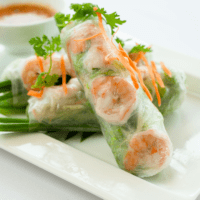
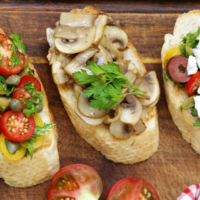
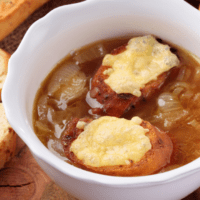

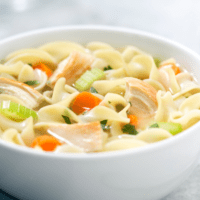
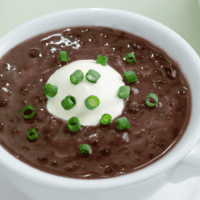
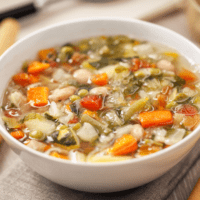



1 Response
[…] the soup with a fresh, crisp green salad. A simple vinaigrette complements the rich flavors of the soup, providing a refreshing contrast and making for a lighter […]